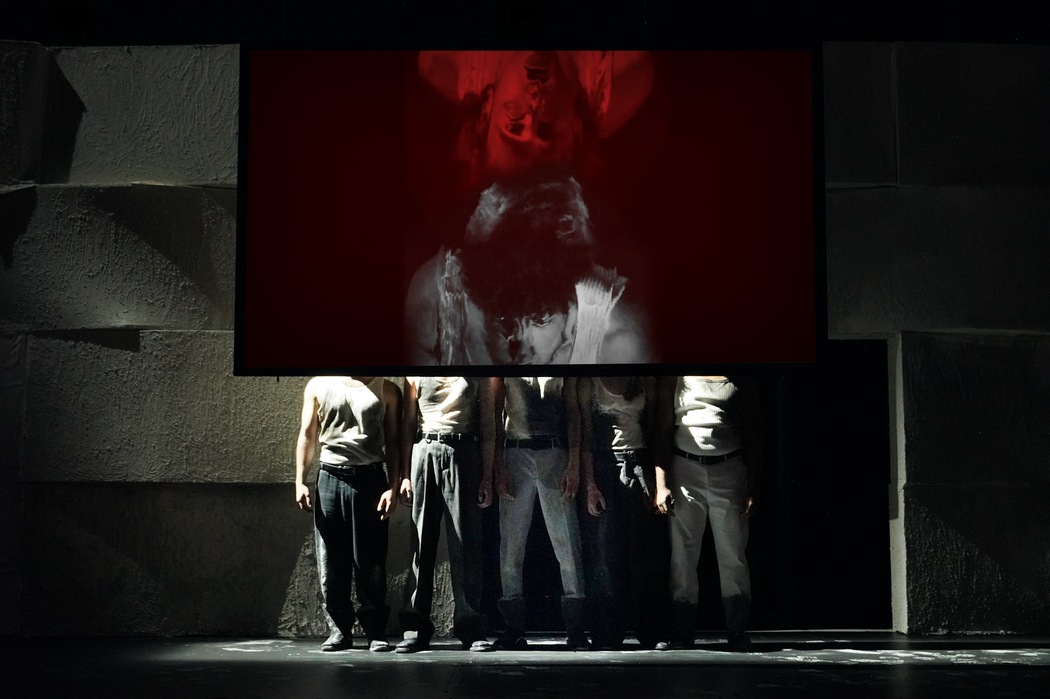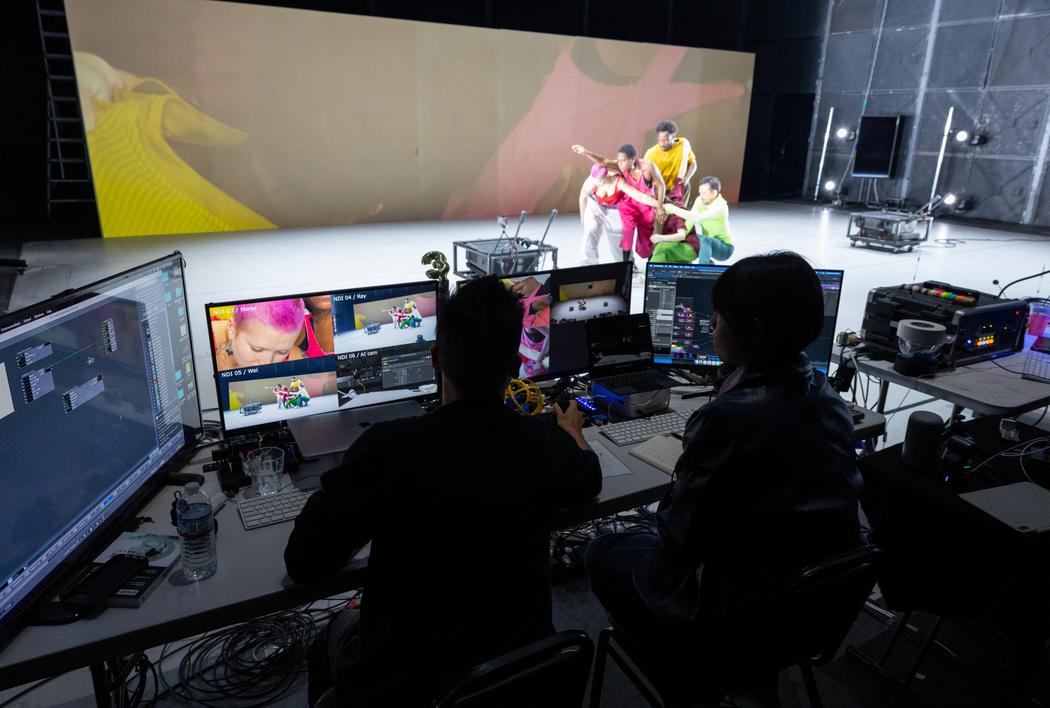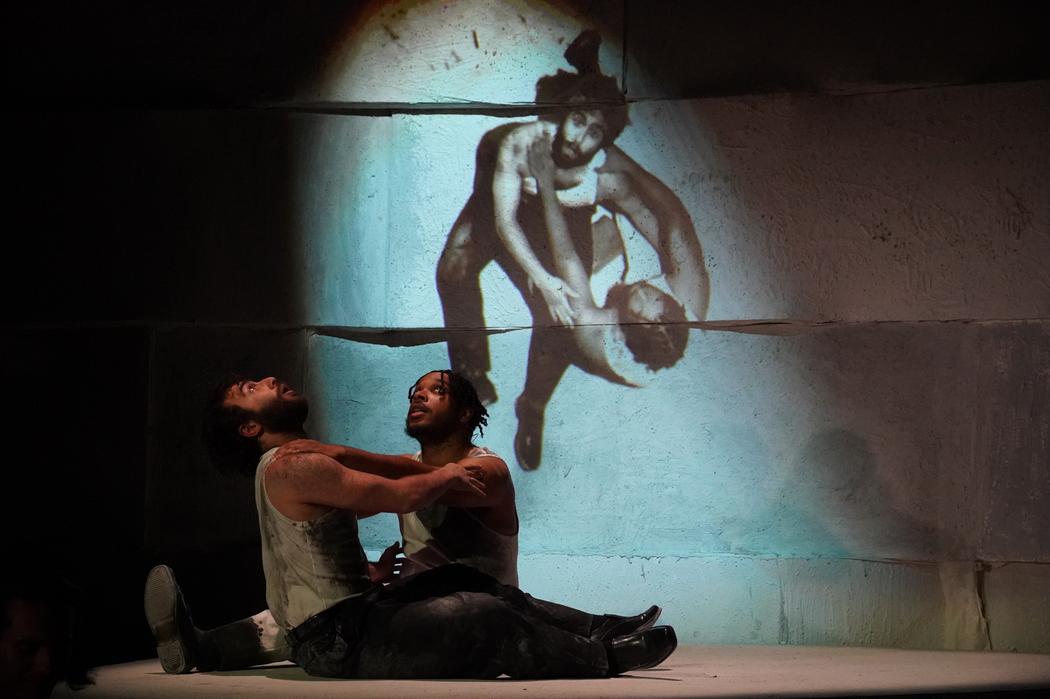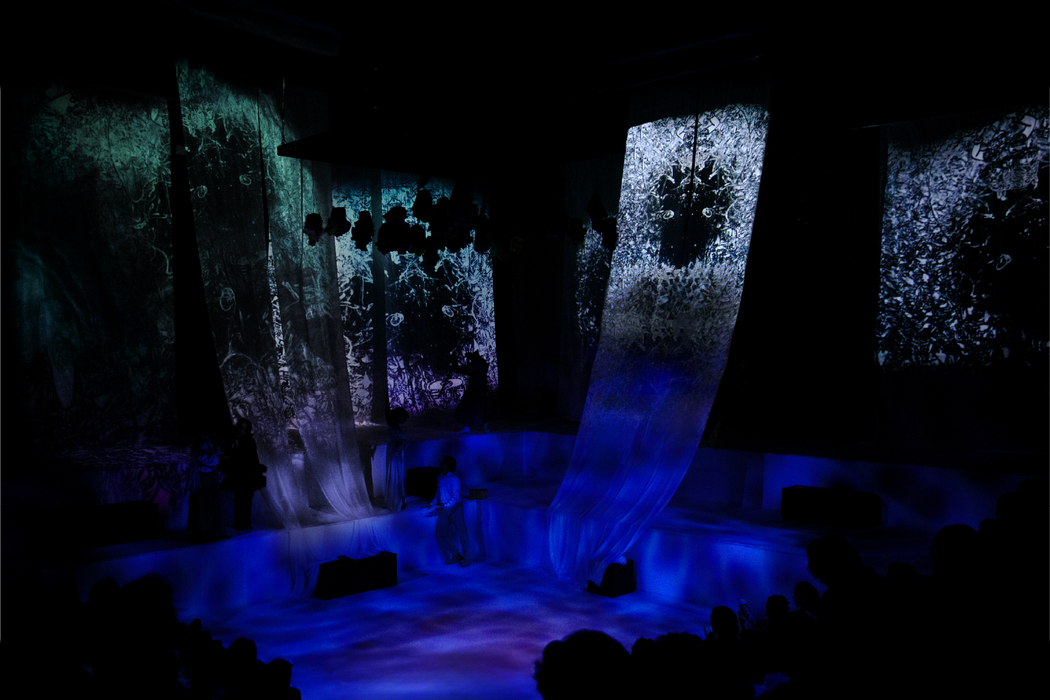Wei-Fang Chang
Year of birth: 1999
Where do you live: New York City
Your education: MFA Theater Design (Interactive Media for Performance), School of Theater, California Institute of the Arts, U.S.A.
Describe your art in three words: Video, System
Your discipline: Video design for performance and interactive programming
Website | Instagram
 Wei-Fang Chang | Danton’S Death | 2025
Wei-Fang Chang | Danton’S Death | 2025
How do your Taiwanese roots and your life between New York and Los Angeles influence your creative perspective?
Living abroad was the first time I truly felt I had roots back home in Taiwan. I didn’t realize how much my identity was shaped by that place until I stepped away from it.
Los Angeles was the first city I lived in after moving to the States. It is a city experienced mostly through movement, through the window of a car and the rhythm of driving alone. Physically I move fast, but mentally I slow down. My attention often turns inward because the city is so vast, and it makes me more aware of my inner landscape. New York, on the other hand, pulls my energy outward. I take in the city at the pace of walking, where everything unfolds close to the skin. It is fast in rhythm but intimate in scale, and the density of encounters makes me feel closer to others, as if my movement is part of a larger rhythm shared with the crowd. Taiwan carries both qualities, the introspection of Los Angeles and the sense of shared presence I find in New York. It feels both grounded and fluid, and that duality continues to shape how I see and create. My work often moves between these two states: inner reflection and external observation, translating movement and place into visual language.
 Wei-Fang Chang | Closed Tomorrow | 2023
Wei-Fang Chang | Closed Tomorrow | 2023
Are there specific artists, technologies, or cultural moments that have shaped your visual language?
In my first MFA class on integrating video for live performance at CalArts, our professor showed us a recording of OR by Dumb Type, a Japanese experimental collective. I still remember the flashing sound line moving across the stage, the rhythm, the light, and the tension between motion and stillness. Sitting in the dark screening room, I was completely pulled into the world of liveness. Liveness has become an essential part of my visual language. I am drawn to moments of conflict, disappearance, and witnessing within the environments created by video. Video as light, video as self-image, video as graphic form, video as system, video as message, video as liveness.
 Wei-Fang Chang | Danton’S Death | 2025
Wei-Fang Chang | Danton’S Death | 2025
You frequently use TouchDesigner and live cameras. How does the choice of software or hardware guide or challenge your storytelling?
Being a creative technologist working in the field of video, or a video designer working in the field of technology, I try to find a balance where technology is not the subject of the work but rather a support for it. I am aware of how easily new tools can become demonstrations of their own possibilities. Technology sometimes limits me, yet it also leads me in unexpected directions through trial and error. I enjoy the dialogue between using the tool and responding to its feedback. Both TouchDesigner and live cameras carry a sense of real-time presence, a kind of noise that cannot be fully controlled. This unpredictability fascinates me; it makes the machine and the system feel more organic, alive, and full of surprise.
Can you describe the collaboration process with performers, choreographers, and directors? How do you integrate video as a living element rather than a static backdrop?
When collaborating within a team, I often begin by asking myself, “What would be lost if there were no video?” This question helps me approach video through subtraction rather than addition. I see video not as something to decorate the stage but as another layer of information or a character talking to the audiences. In rehearsal, I try to sense the rhythm of the room, to breathe with the movement on stage. Feeling comes first, and then the image follows, finding its place within the space.
 Wei-Fang Chang | Dream | 2023
Wei-Fang Chang | Dream | 2023
The idea of the “screen-based self” and a sense of displacement appears throughout your projects. What draws you to exploring identity and self-perception through technology?
What draws me to this idea is realizing that in a video meeting, I can never truly see my own eyes. I can see my face, but my gaze never meets itself. That subtle distance created when a live camera is used as a mirror became the starting point of my curiosity. In my installation works, I use cameras as mirrors to capture the viewer’s portrait, deliberately positioning the monitors and cameras to create a logical conflict, an outsideness that reveals the uncanny gap between a screen-based body and a physical body.
Spectators see themselves through the eyes of another viewer, and I am fascinated by the idea that this “other viewer” is oneself, the way the screen-based self exists within the context of video. This disconnect creates a split subject, a distance between how one experiences the self and how the self is mediated on screen. I am drawn to this in-between state, where the image is both familiar and strange. The viewer’s discomfort when faced with their not-quite-right reflection becomes a way to question perception and the reliability of vision.
 Wei-Fang Chang | Materiality Of Surrender | 2024
Wei-Fang Chang | Materiality Of Surrender | 2024
Your projects often involve audience participation or touch interaction. What does “audience agency” mean to you in the context of theatre and installation art?
The spectator is integral to the completion of the work. The essence of installation art lies in participation, in creating an open-ended invitation for the viewer to enter the piece. Audience agency is not something I impose but something the form itself demands, turning spectatorship into a form of collaboration. I often use live cameras in my video installation works; without the audience, there is no subject to be captured, no image, and ultimately no work.
 Wei-Fang Chang | Heading Into Night | 2024
Wei-Fang Chang | Heading Into Night | 2024
What message or experience would you like audiences to carry with them after encountering your installations or performances?
I’d love for audiences to see themselves in my work. Sometimes literally, by seeing their own face reflected in the piece, and sometimes emotionally, by recognizing a feeling or state of being. What matters to me is that they sense their own presence within the work, that quiet moment of recognition, maybe even with a small smile, a moment of self-awareness when they think, “Oh, this looks familiar,” or “I’ve felt this way before.”

Leave a Reply